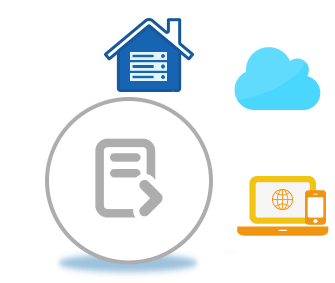Freely View PDF File Online and Read Document via Python
Develop powerful Python based PDF document viewer utility application. Code listed to read PDF document through Python.
View PDF Document via Online App
- Import PDF file to view by uploading it.
- Do it by clicking inside the drop area via drag and drop of viewer app.
- Depending on the size of PDF file and internet speed, wait for few seconds.
- It will be automatically rendered and opened in the browser for view.
- Navigate between pages in case of multi pages PDF document.
- Set page view zoom-in or zoom-out.
Read PDF File via Python for Viewer App
- Include relevant packages within the project directly from PyPI ( Aspose.PDF )
- Create document class object and load source PDF file using it.
- Extract text from the PDF by instantiating a TextAbsorber object.
- Invoke the accept() method to read the whole text for your own developed Viewer app.
- Or Convert the source file to HTML using save method of same API.
- And use subprocess.run to invoke the browser to view PDF file.
Code example in Python to view PDF Files
Python Code to Read PDF Documents
Develop PDF File Viewer Application via Python
Need to develop a PDF viewer app or utility? With
Aspose.PDF for Python via .NET
a child API of
Aspose.Total for Python via .NET
, any python developer can integrate the above API code within its document viewer application. Powerful Python library allows programming any document display solution that can support many popular formats including PDF format.
Python utility to process PDF file for display app
There are alternative options to install “
Aspose.PDF for Python via .NET
” or “
Aspose.Total for Python via .NET
” onto your system. Please choose one that resembles your needs and follow the step-by-step instructions:
- Install Aspose.PDF for Python via .NET from PyPI
- Or Use the following pip commands
pip install aspose-pdf.
System Requirements
- Python 3.5 or later is installed
- GCC-6 runtime libraries (or later).
- For Python 3.5-3.7: The pymalloc build of Python is needed.
For more details please refer to Product Documentation .
FAQs
- Can I use above Python code in my application?Yes, you are welcome to download this code and utilize it for the purpose of developing Python-based document viewer application. This code can serve as a valuable resource to enhance the functionality and capabilities of your projects in the domain of backend document processing such as reading content of the document for display app.
- Is this online document viewer App work only on Windows?You have the flexibility to initiate viewing documents at any device, irrespective of the operating system it runs on, whether it be Windows, Linux, Mac OS, or Android. All that's required is a contemporary web browser and an active internet connection.
- Is it safe to use the online app for viewing PDF document?Of course! The output files generated through our service will be securely and automatically removed from our servers within a 24-hour timeframe. As a result, the display links associated with these files will cease to be functional after this period.
- What browser should to use App?You can use any modern web browser like Google Chrome, Firefox, Opera, or Safari for online PDF document viewer. However, if you're developing a desktop application, we recommend using the Aspose.Total document processing API for efficient management.
Explore File Viewer Options with Python
What is PDF File Format?
PDF, or Portable Document Format, is a file format designed for presenting documents in a manner that remains consistent across various software applications, hardware devices, and operating systems. Each PDF file contains a comprehensive description of a fixed-layout document, encompassing text, fonts, graphics, and other necessary information for accurate display. Initially developed by Adobe Systems in the early 1990s, PDF served as a means to share computer documents while preserving text formatting and inline images.
PDF files are typically generated using software like Adobe Acrobat or similar PDF creation tools. Presently, PDF has become an open standard governed by the International Organization for Standardization (ISO). This standardization ensures compatibility and interoperability across different platforms and systems. To view PDF files, users can utilize free software such as Adobe Reader or other PDF viewers available.
One of the significant advantages of PDF is its platform independence, allowing seamless viewing and printing on a wide range of devices and operating systems. Regardless of the hardware or software used, the document’s layout and content will remain intact. This universal accessibility has contributed to the popularity of PDF as a preferred format for sharing and distributing documents across diverse platforms and systems.
PDF’s capability to encapsulate a complete document, including text, fonts, graphics, and formatting, makes it a reliable choice for various applications. Whether it’s sharing important reports, publishing e-books, distributing forms, or delivering professional presentations, PDF ensures consistent document rendering and reliable preservation of content across different environments.


